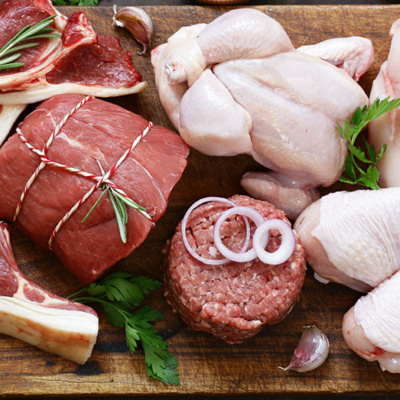top of mind news
- Cashless Restaurants in NYC Will Officially Be Banned This Year
- People Eat With Their Eyes – Managing A Restaurant’s Digital Marketing Process
- Families Are Big Business – Don’t Ignore the Youngest Customer
- California Privacy Act Is Changing The Game For Businesses
- 10 Essential Points to Building a Restaurant Brand
THE FARM
Poultry
For the week ending February 8th, total chicken slaughter was up 5.7%, and with bird weights up 2.6%, ready-to-cook broiler production was a whopping 8.5% better than the same week last year. While breast meat prices have been sliding since mid-January, prices last week posted a modest recovery but remain at their lowest level since at least 2000. Chicken wing prices have remained mostly steady heading into the mid-winter, but year-over-year discounts are fading leaving recent spot pricing near par with year ago levels. Anticipate lower chicken wing markets in the coming weeks and into the early spring. Firm chicken leg quarter prices may persist into late March.
Beef
Weekly beef production schedules are declining seasonally, but last week’s continuation of heavier carcasses (y/y) supported output. Beef production last week was 3.9% more than last year, while cattle harvested were up just 2% (y/y), and production was down 1.7% from the week prior. While we’ve been noting that the beef 50s were a buying opportunity recently, the 50s made a major move higher to close out last week, jumping from the lower $0.50s towards the $0.90s area to start this week. Although this weekly price volatility is unusual, look for prices to reset towards the $0.70s before edging higher into late spring.
Pork
Last week pork production was down 3.8% from the prior week, but was 4.3% larger than the same week in 2019. Lighter shipments to China, amid ongoing coronavirus fears, continues to leave more product available for our domestic market. Pork belly prices remain near all-time lows for mid-winter, with loins, butts, and hams moving near longer-term historical lows as well. China remains in need of food resources, and U.S. pork remains the cheapest in the world. So, anticipate pork export demand to increase.
THE SEA
Seafood
World snow crab supplies remain limited. U.S. snow crab imports during December were 14.3% bigger than the previous year but still seasonally small. Further, import prices remained expensive, well above 2018. The Bering Sea snow crab fishing season is progressing, and Canadian landings should begin next month. However, snow crab stocks are anticipated to remain relatively limited. Thus, the downside price risk for the snow crab markets may only be modest for the foreseeable future.
THE GARDEN
Produce
The Idaho potato markets continue to trade at expensive levels, especially for larger sized product. Potato supplies remain limited due to the adverse weather conditions during the early fall. The USDA estimate for the total 2019 domestic potato harvest is 422.9 million hundredweight, up .1% from the previous projection but down near 6% from 2018. Further, the quality of the potatoes remains suspect. Inflated potato prices could persist into the summer. The avocado markets are firm. Tighter supplies from Mexico could continue to underpin avocado prices at least in the near term.
THE KITCHEN SINK
Dairy
The cheese block market has weakened recently but is still the highest for February since 2014. EU cheese prices are notably lower versus U.S. prices which should temper domestic exports. Seasonally, cheese prices usually trend lower in the near term but typically bottom in mid-March. The spot butter market remains lackluster and is sitting right on the 39-month low set last month. Plentiful cream supplies are fueling solid butter production and inventories are in good shape. Seasonally, butter prices tend to establish a yearly bottom in mid-February to late-March and establish a peak during August.
Grains
The wheat markets have found modest weakness during the last week, until Tuesday. World wheat supplies from major exporting countries, including the largest, Russia, are estimated by the USDA to be historically tight. This could temper any further downside potential in the wheat markets throughout the spring.
Oil
Nearby WTI crude oil futures earlier this month fell below $50/bbl. but have since rebounded 7.5% higher. The coronavirus has been a negative influence on the petroleum markets, but a strong U.S. economy may bring crude oil prices to $53/bbl.














